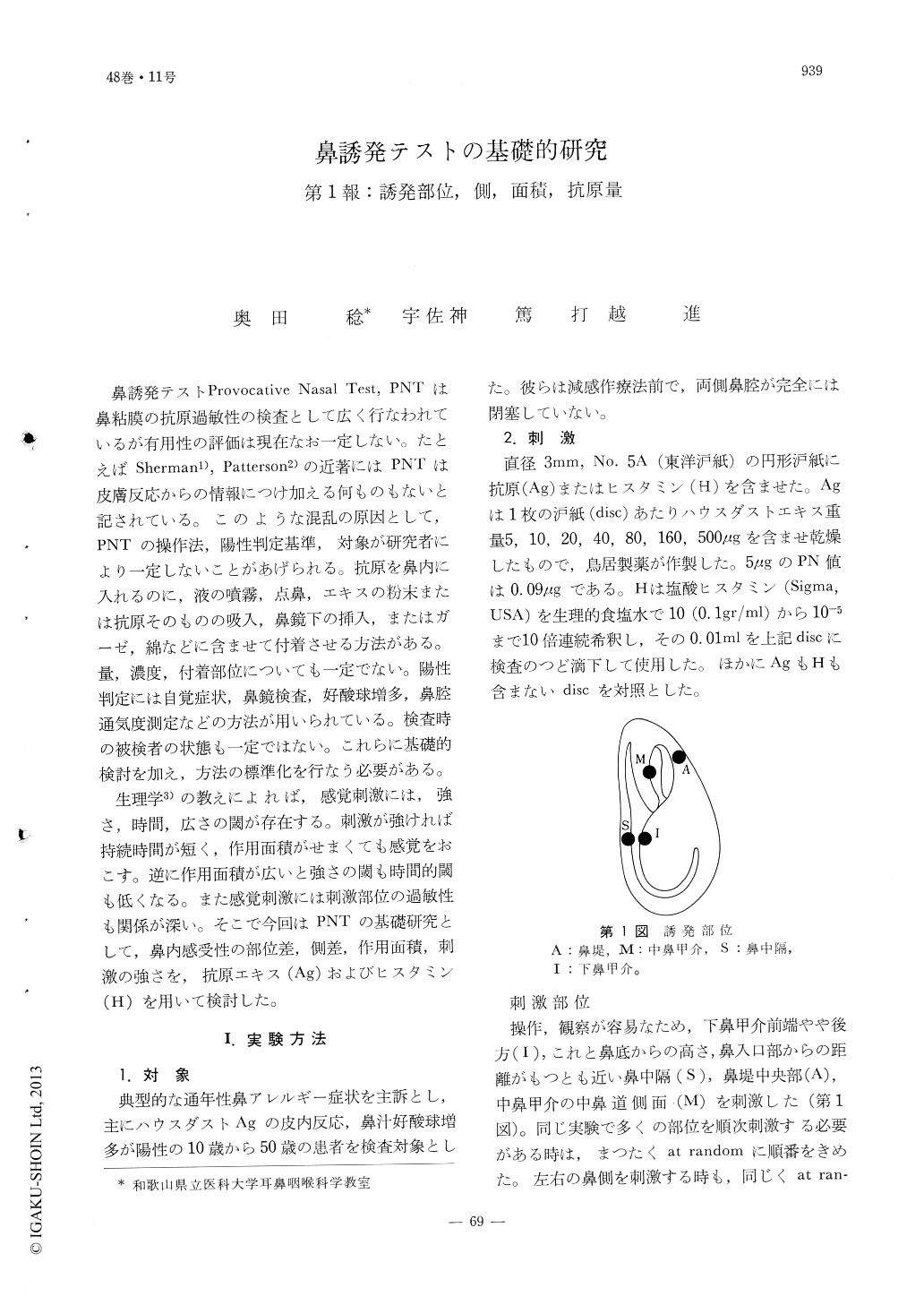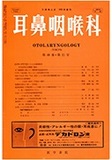Japanese
English
- 有料閲覧
- Abstract 文献概要
- 1ページ目 Look Inside
鼻誘発テストProvocative Nasal Test,PNTは鼻粘膜の抗原過敏性の検査として広く行なわれているが有用性の評価は現在なお一定しない。たとえばSherman1),Patterson2)の近著にはPNTは皮膚反応からの情報につけ加える何ものもないと記されている。このような混乱の原因として,PNTの操作法,陽性判定基準,対象が研究者により一定しないことがあげられる。抗原を鼻内に入れるのに,液の噴霧,点鼻,エキスの粉末または抗原そのものの吸入,鼻鏡下の挿入,またはガーゼ,綿などに含ませて付着させる方法がある。量,濃度,付着部位についても一定でない。陽性判定には自覚症状,鼻鏡検査,好酸球増多,鼻腔通気度測定などの方法が用いられている。検査時の被検者の状態も一定ではない。これらに基礎的検討を加え,方法の標準化を行なう必要がある。
生理学3)の教えによれば,感覚刺激には,強さ,時間,広さの閾が存在する。刺激が強ければ持続時間が短く,作用面積がせまくても感覚をおこす。逆に作用面積が広いと強さの閾も時間的閾も低くなる。また感覚刺激には刺激部位の過敏性も関係が深い。そこで今回はPNTの基礎研究として,鼻内感受性の部位差,側差,作用面積,刺激の強さを,抗原エキス(Ag)およびヒスタミン(H)を用いて検討した。
There is no uniform method in making a nasal inhalation test. In order to seek some unified method of this testing, the authors employed histamines and other antigens on allergic patients.
In the nasal cavity, hypersensitivity to irritants appear to differ from one structure to the other The inferior turbinate and the floor of the nasal cavity appeared to be more sensative than the middle turbinate. The inferior turbinate being more accessible from external approach was used for convinience in the experiment. The degree of sensitivity differed with sides. It was necessary to test both sides simultaneously.
The degree of reaction was dependent upon the area on which the irritant was applied; for convenience the area 7 mm2 was adopted for the use. House dust extract was used for antigen.

Copyright © 1976, Igaku-Shoin Ltd. All rights reserved.


